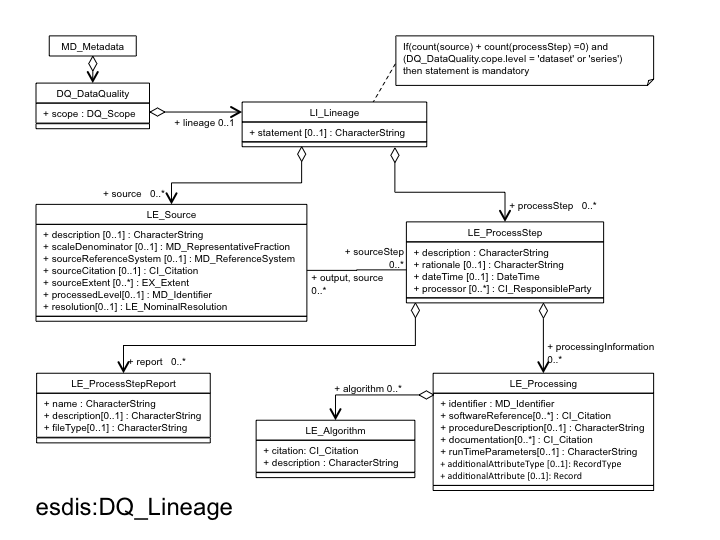ECHO Model Evolution
The ECHO model includes two mechanisms for describing attributes that are not included in the base model: characteristics and additional attributes. Characteristics are used to provide specific information about platforms, instruments and sensors. Characteristics include four attributes (column 1 in Table 1). Additional attributes are unclassified metadata elements that include eight attributes (column 2 in Table 1) which are a superset of the characteristic properties.
Table 1. ECHO Characteristic and Additional Attribute Properties| Characteristic Properties | Additional Attribute Properties |
| Name | Name |
| DataType | DataType |
| Description | Description |
| MeasurementResolution | |
| ParameterRangeBegin | |
| ParameterRangeEnd | |
| Units | ParameterUnitsOfMeasure |
| ParameterValueAccuracy | |
| ValueAccuracyExplanation |
Current ECHO collection metadata includes a rather small number of unique characteristics (Table 2) and over 300 unique additional attributes.
Table 2. Existing Platform, Instrument, and Sensor Characteristics| Characteristic Type | Existing Values |
| Platform Characteristics | EquatorCrossingTime |
| OrbitalPeriod | |
| OrbitInclination | |
| Instrument Characteristics | SwathWidth |
| ScanAngle | |
| ScanPeriod | |
| MaximumBrightnessTemperature | |
| MinimumBrightnessTemperature | |
| Resolution1 | |
| Resolution2 | |
| Resolution3 | |
| Resolution4 | |
| Resolution5 | |
| Sensor Characteristics | Wavelength |
| Transmission | |
| Waveform |
Given the overlap between characteristic and additional attribute properties, and the small number of unique platform, instrument, and sensor characteristics, it may make sense to convert the characteristics to additional attributes and to add a type property to the additional attributes in order to allow classification of the additional attributes and translation into appropriate ISO classes. Possible types and appropriate ISO classes are shown in Table 3.
Table 3. Additional Attribute Types and Appropriate ISO Classes| Additional Attribute Type | Appropriate ISO Class | Additional Attribute Type | Appropriate ISO Class |
|---|---|---|---|
| platformCharacteristic | MI_Platform (with extensions) | algorithmParamater | LE_Processing (with extensions) |
| instrumentCharacteristic | MI_Instrument (with extensions) | additionalAttribute | MD_SampleDimension (ISO 19115-1) |
| sensorCharacteristic | MI_Sensor (new class) | qualityInformation | DQ_QualityMeasure (ISO 19157) |
ISO Extensions
Acquisition Information

